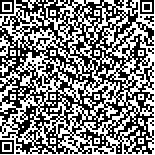李明、王强、马健、孟萍萍、张大伟、宫阳阳.强化训练对脑卒中后抑郁患者下肢运动功能及抑郁状态的影响[J].中华物理医学与康复杂志,2016,38(4):283-286
扫码阅读全文

|
| 强化训练对脑卒中后抑郁患者下肢运动功能及抑郁状态的影响 |
|
| |
| DOI: |
| 中文关键词: 脑卒中后抑郁 强化训练 下肢运动功能 |
| 英文关键词: Post-stroke depression Intensive training Lower extremity function |
| 基金项目: |
|
| 摘要点击次数: 3610 |
| 全文下载次数: 5087 |
| 中文摘要: |
| 目的 观察强化训练对脑卒中后抑郁患者下肢运动功能及抑郁状态的影响。 方法 采用随机数字表法将30例脑卒中后抑郁患者分为强化组及普通组,每组15例。2组患者均给予常规脑卒中药物治疗、抗抑郁药物治疗及康复训练,强化组在此基础上每日增加1次下肢运动功能训练。于治疗前、治疗2周、4周后分别采用汉密尔顿抑郁量表(HAMD)、下肢Fugl-Meyer运动功能评分(FMA)、10m最大步行速度(10MWT)、Holden步行功能分级(FAC)对2组患者进行评定,同时检测2组患者上述时间点血清中β-内啡肽(β-EP)及脑源性神经营养因子(BDNF)水平。 结果 治疗4周后2组患者下肢FMA评分、10MWT、BDNF及β-EP均较治疗前明显改善(P<0.05)。治疗2周后2组患者下肢FMA评分、10MWT、BDNF及β-EP组间差异均无统计学意义(P>0.05),治疗4周后强化组下肢FMA评分[(20.67±6.79)分]、10MWT[(0.48±0.22)m/s]、血清中BDNF含量[(10.81±2.33)μg/L]及β-EP含量[(164.02±42.15)ng/L]均较普通组明显改善(均P<0.05)。治疗2周及4周后强化组HAMD评分[分别为(16.33±6.74)分和(12.13±5.44)分]均较普通组明显改善(均P<0.05);治疗2周、4周后2组患者FAC分级组间差异均无统计学意义(P>0.05)。 结论 强化训练能进一步促进脑卒中后抑郁患者下肢运动功能及抑郁状态改善,该疗法值得临床推广、应用。 |
| 英文摘要: |
| Objective To observe the effect of intensive training on lower extremity motor function and depression after stroke. Methods Thirty patients with post-stroke depression were randomly divided into an intensive training group and a control group, each of 15. Both groups received conventional anti-stroke and antidepressant drug therapy, and rehabilitation training. The intensive training group, however, was additionally provided with lower extremity motor function training each day. Hamilton Depression Rating Scale, the Fugl-Meyer assessment (FMA), 10-meter maximum walking speed test (10MWT) and the Holden functional ambulation categories (FAC) were conducted before treatment, and 2 and 4 weeks after the treatment. The level of human β-endophin (β-EP) and brain derived neurotrophic factor (BDNF) in the serum were also detected. Results After 4 weeks of treatment, the FAM, 10MWT, BDNF and β-EP were significantly improved in both groups compared to those before the treatment (P<0.05). No significant differences, however, were found between the 2 groups in the above measurements after 2 weeks of treatment (P>0.05). After 4 weeks of treatment, the FAM (20.67±6.79), 10MWT [(0.48±0.22)m/s], BDNF [(10.81±2.33)μg/L] and β-EP [(164.02±42.15)ng/L] of the intensive training group were significantly improved compared to those of the control group (P<0.05). Both after 2 weeks and 4 weeks treatment, the HAMD scores of the intensive training group (16.33±6.74 and 12.13±5.44) were significantly better than those of the control group (P<0.05). However, there was no significant difference in terms of FAC between the two groups either after 2 weeks or 4 weeks of treatment (P>0.05). Conclusion The intensive training can improve motor function and relieve post-stroke depression of stroke survivors. It is worth promoting and applying in clinical practice. |
|
查看全文
查看/发表评论 下载PDF阅读器 |
| 关闭 |
|
|
|